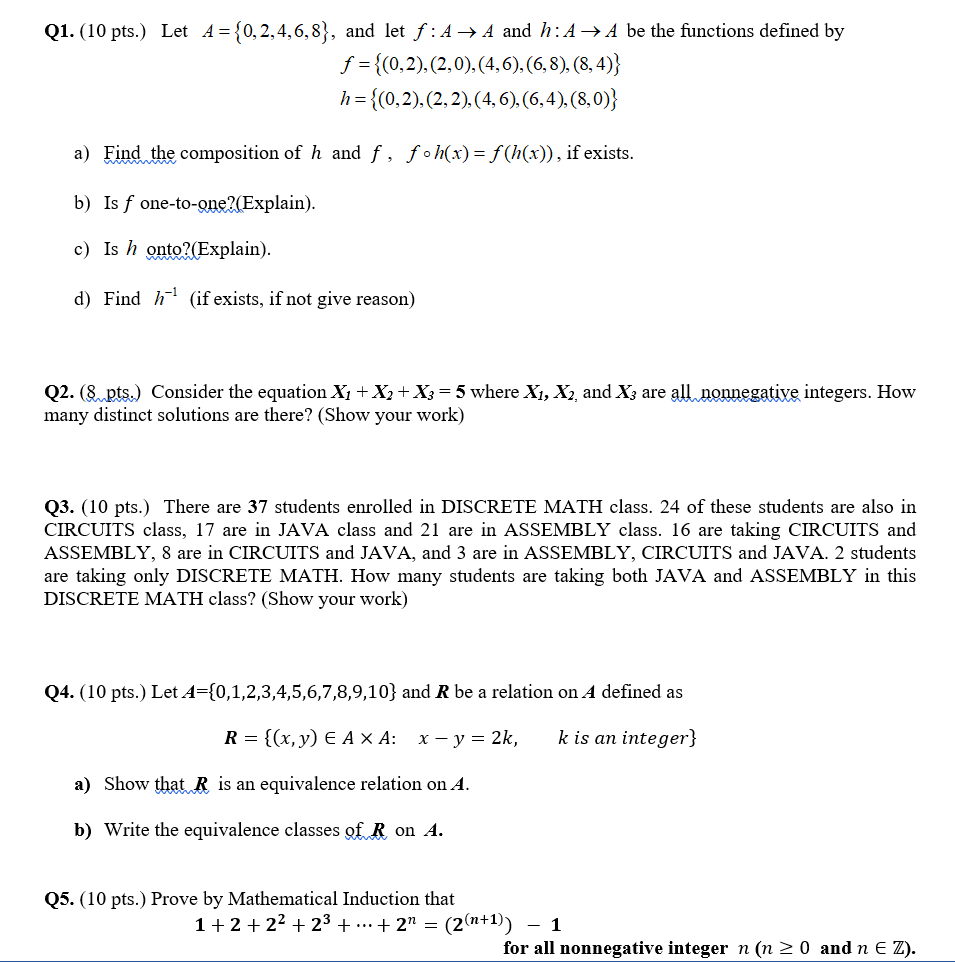Answered step by step
Verified Expert Solution
Question
1 Approved Answer
Q1. (10 pts.) Let A={0,2,4,6,8}, and let : AA and h: AA be the functions defined by ={(0,2), (2,0), (4,6), (6,8), (8,4)} h =

Q1. (10 pts.) Let A={0,2,4,6,8}, and let : AA and h: AA be the functions defined by ={(0,2), (2,0), (4,6), (6,8), (8,4)} h = {(0,2), (2, 2), (4, 6), (6,4), (8,0)} a) Find the composition of h and f, foh(x)= f(h(x)), if exists. b) Is f one-to-one? (Explain). c) Ishonto?(Explain). d) Find h (if exists, if not give reason) Q2. (8 pts.) Consider the equation X + X + X3 = 5 where X, X, and X3 are all nonnegative integers. How many distinct solutions are there? (Show your work) Q3. (10 pts.) There are 37 students enrolled in DISCRETE MATH class. 24 of these students are also in CIRCUITS class, 17 are in JAVA class and 21 are in ASSEMBLY class. 16 are taking CIRCUITS and ASSEMBLY, 8 are in CIRCUITS and JAVA, and 3 are in ASSEMBLY, CIRCUITS and JAVA. 2 students are taking only DISCRETE MATH. How many students are taking both JAVA and ASSEMBLY in this DISCRETE MATH class? (Show your work) Q4. (10 pts.) Let A={0,1,2,3,4,5,6,7,8,9,10} and R be a relation on A defined as R = {(x, y) E AXA: x - y = 2k, k is an integer} a) Show that R is an equivalence relation on A. b) Write the equivalence classes of R on A. Q5. (10 pts.) Prove by Mathematical Induction that 1+2 +2 +2+ ... + 2n = (2(n+1)) - 1 for all nonnegative integer n (n 0 and n Z).
Step by Step Solution
There are 3 Steps involved in it
Step: 1

Get Instant Access to Expert-Tailored Solutions
See step-by-step solutions with expert insights and AI powered tools for academic success
Step: 2

Step: 3

Ace Your Homework with AI
Get the answers you need in no time with our AI-driven, step-by-step assistance
Get Started


